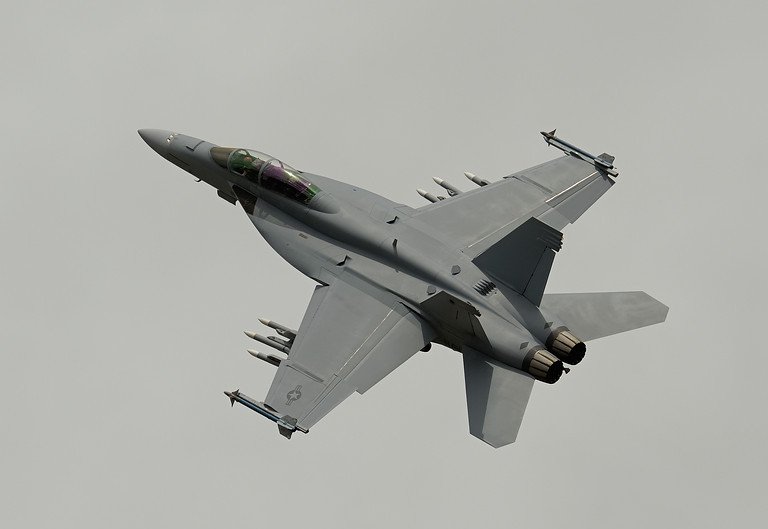The Liberal government has brushed aside opposition concerns following a report it intends to purchase Super Hornet fighter jets, saying it must act “sooner rather than later” to meet the country’s defence needs.

The Ottawa Citizen, citing multiple sources, reported over the weekend the Liberal government is intent on buying Super Hornet fighter jets.
Rather than a full replacement of the air force’s aging CF-18 fighter fleet, it’s believed the purchase will be labelled an interim measure to fill what Defence Minister Harjit Sajjan has warned is a pending “gap” in Canada’s military capabilities.
The Liberals promised during the election campaign not to buy the F-35 to replace the CF-18s. But the government has been struggling with how to fulfill that promise for fear any attempt to exclude the stealth fighter from a competition will result in a multi-billion-dollar lawsuit, says a senior Defence Department official.
In the House of Commons Monday, Conservative defence critic James Bezan accused the Liberals of having already decided to buy the Boeing Super Hornet.
John McKay, Sajjan’s parliamentary secretary, didn’t deny the charge, but blamed the Conservatives for failing to deal with the fighter jet replacement during their tenure.
“Unfortunately, the last five years has been a bit of a loss, and as a consequence, there is a developing capability gap which needs to be managed,” McKay said. “We have obligations to NATO. We have obligations to NORAD. We have obligations to our own defence and to expeditionary matters.”
Sajjan has “taken the responsible action and he is moving forward with making a decision sooner rather than later, which should have happened maybe five years ago now.”
Bezan questioned the Liberal government’s claim the CF-18s are close to the end, pointing out they can operate effectively until 2025.
“Liberal suggestions that our fighters are literally on their last legs is patently false,” he said.
In 2014, the Conservative government said it was upgrading the CF-18s so they could continue to operate through 2025. That $400-million initiative was intended to buy the government time to make the right decision on a replacement.
The Royal Canadian Air Force is continuing to work on the project and contracts are expected to be awarded in the next two years.
In April, Lt.-Gen. Michael Hood, the air force chief, told the Commons’ defence committee the military had enough CF-18s to do its job for the foreseeable future.
The end of the CF-18s “useful life” has been established as 2025, and while some aircraft will be retired before that, there is no rush on a replacement, he added.
“I’m confident, heading into what the government has suggested for an open and transparent competition, about the timelines associated with that project,” Hood said. “I’m confident that if a decision were taken, certainly in the next five years, we’ll be in a comfortable position changing that aircraft.”
In the last month, Sajjan has introduced the idea that a fighter capability gap has emerged and the government needs to move quickly on a replacement jet.
McKay said the government finds itself in the situation “where we are going to have to make serious decisions about the replacement for the CF-18. We cannot any longer carry on in the fashion that we’ve been carrying on.”
There is precedent for buying Super Hornets on an interim basis. Australia paid $2.5 billion for 24 of the aircraft to replace antiquated F-111 jets until newer F-35s were ready.
However, the idea of Canada needing to follow suit was largely dismissed by a government-appointed expert panel and the military’s research branch.
The expert panel, whose mandate was to evaluate options for replacing the CF-18s, wrote in its final report in December 2014 “there was no need to pursue a bridging option,” as “it is possible, with certain investments, to fly the CF-18 to 2025 and even beyond.”
In 2014, Defence Research and Development Canada wrote ,“The costs involved with bridging options make them unsuitable for filling capability gaps in the short term … any short-term investment results in disproportionately high costs during the bridging period.”
The reason such a stop-gap would be more expensive is because the air force would be operating two types of aircraft, requiringdifferent training, infrastructure and supporting equipment. Opinion is divided over whether buying the Super Hornet could mitigate some of those costs given its similarities to the CF-18.
No comments:
Post a Comment